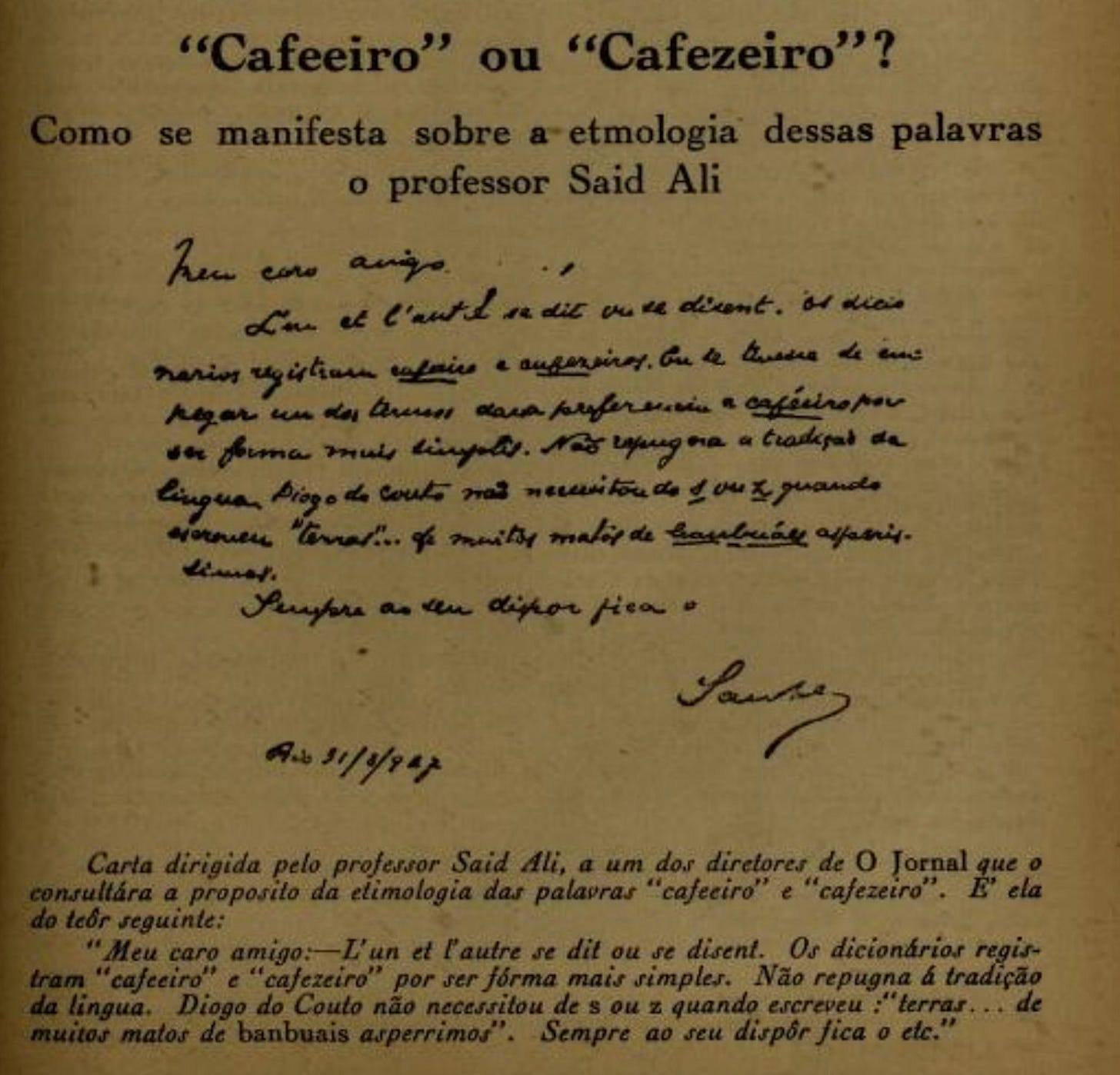In the world of Brazilian coffee, even the name of the coffee plant is a curiosity. Both cafeeiro and cafezeiro refer to the coffee plant (Coffea), but what’s the difference? In the 1934 book O Café no segundo centenário de sua introdução no Brasil by the former Departamento Nacional do Café, a renowned Brazilian philologist named Manuel Said Ali Ida noted that both terms are valid, with cafeeiro favored for its simplicity, aligning with Portuguese’s flexible spelling tradition [1].
The -eiro suffix is versatile in Portuguese. It can denote:
Professions: carpinteiro (carpenter)
Origin: mineiro (someone from Minas Gerais)
Plants: laranjeiro (orange tree), referencing the thing that produces the fruit
It should also be noted that cafezeiro uniquely doubles as “coffee farmer” in Brazilian Portuguese, with the ”z” being the only letter that differentiates the two words. This is an element known as a connecting consonant, and it aids in pronunciation or to maintain harmony. Just like connecting consonants, there are also connecting vowels, such as an “i” between two words, as seen in salicultura (salt farming) [2].
This might lead the Brazilian coffee aficionado to question the art of coffee farming, ie, cafeicultura. At first glance, the “i” between café and cultura might seem like a connecting vowel, too. However, it’s simply a standard Portuguese compound borrowed from Latin, akin to agricultura (farming) or viticultura (grape growing), where the “i” is part of the morphological -cultura suffix, ensuring smooth pronunciation.
This linguistic play reflects Brazil’s jogo de cintura, or flexibility, as well as its deep connection to coffee, where even words carry history. Next time you sip your café, consider the cafeeiro - or is it cafezeiro? - that brought it to your cup.
Sources
1 - O Café no segundo centenário de sua introdução no Brasil (p. 535)
2 - Ciberdúvidas: A palavra cafeeiro



